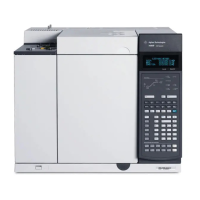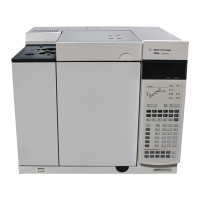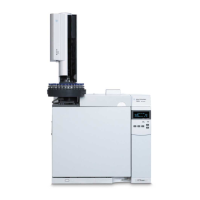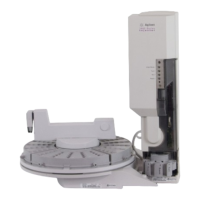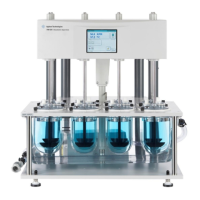Chromatographic Symptoms 3
Agilent 7890 Series Troubleshooting 45
• Verify the gas purity. Perform replicate runs, several with a
short interval between them, then several with a large
interval. If the contamination peaks are larger for the runs
made with the longer interval, suspect contaminated gas: the
contamination has more time to deposit onto the column and
liner.
• Check for supply tubing and fitting contamination.
• If you suspect that there is contamination in the inlet,
perform the bakeout procedure (SS, MMI, PP, COC, PTV, VI).
• Verify the operation of the inlets. Clean the inlet and replace
the contaminated inlet parts.
• To Clean the Split/Splitless Inlet
• To Clean the Purged Packed Inlet
• To Clean the Cool On-Column Inlet
• To Clean the Septumless Head on the PTV Inlet
• To Clean the Multimode Inlet
• To Clean the Septum Seat in the Septum Head Assembly
of the PTV Inlet
• To Clean the VI
• Check the solvent level in the ALS wash bottles.
• Replace the ALS syringe if necessary (7693A, 7683).
• Check the sample injection volume. Verify that the ALS is
injecting enough sample into the inlet. Use the Solvent Vapor
Volume Calculator to determine how much of the sample
should be injected.
• Ghost peaks are sometimes caused by contaminated sample
vials. Try new or clean vials to see if ghost peaks disappear.
• Some samples change with heat or ultraviolet light. Check
the sample stability.
Column, method
• Perform column maintenance: Bake out contaminants,
remove the contaminated length of column near the inlet,
and reverse and bake out the column as needed.
• If you suspect that there is contamination in the column,
perform the bakeout procedure.
• Verify that the oven program temperature and time are
sufficient for the samples being injected. Ghost peaks that
are broader than adjacent sample peaks could be from a
previous run.
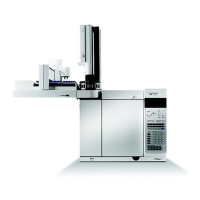
